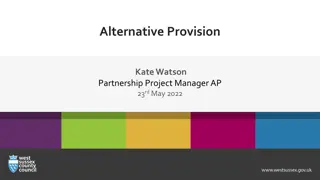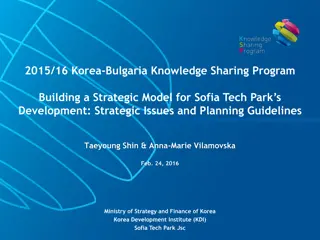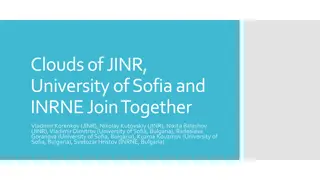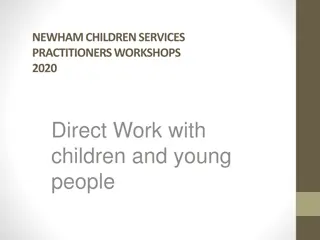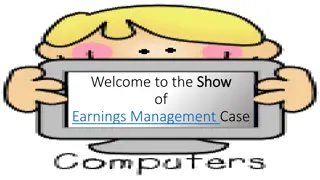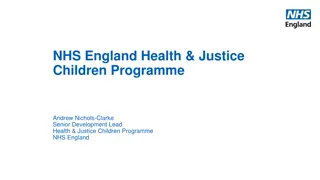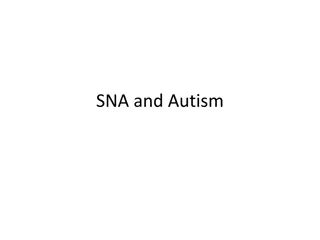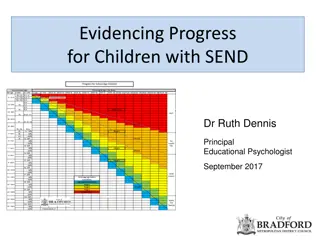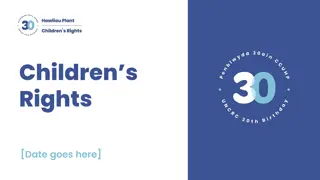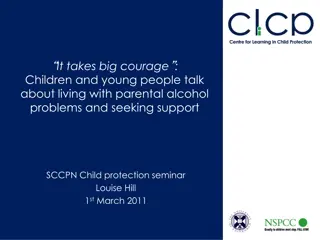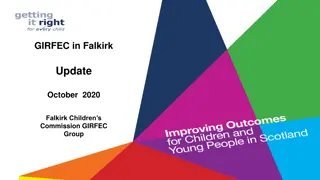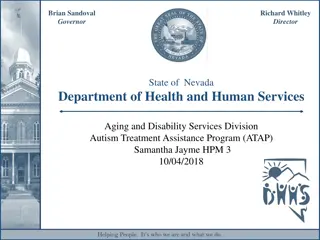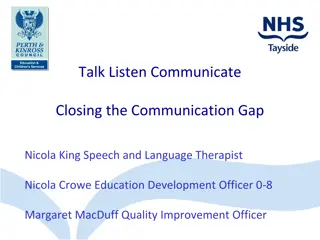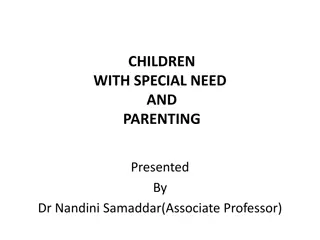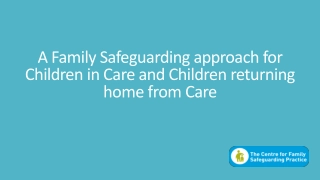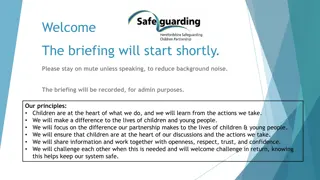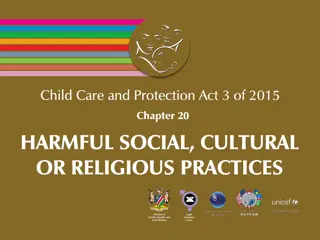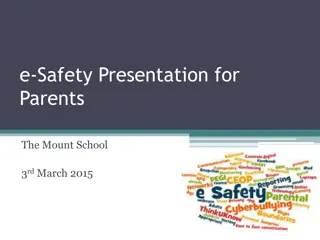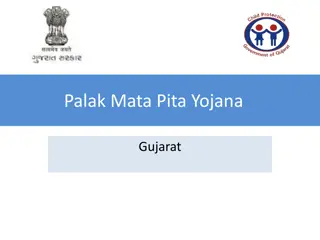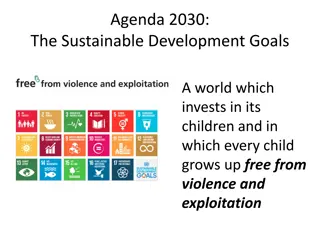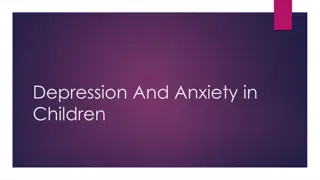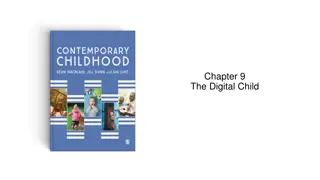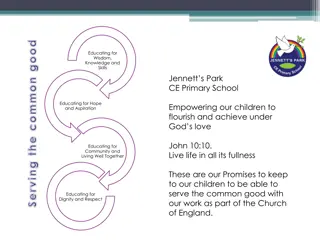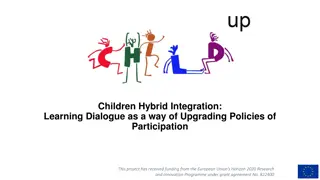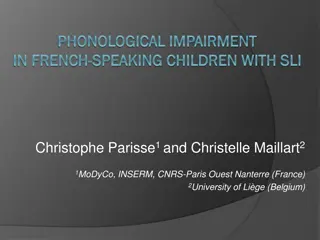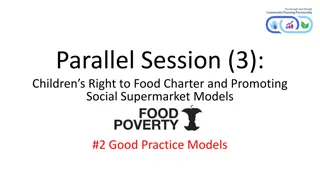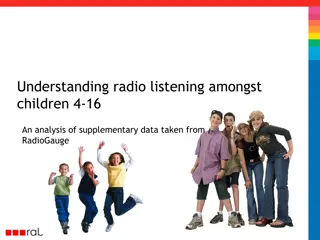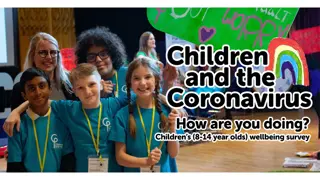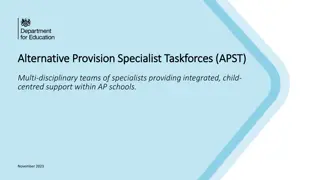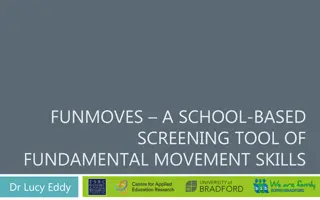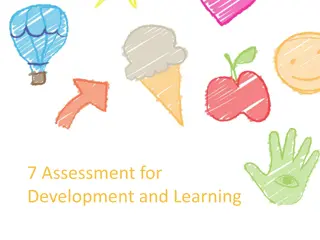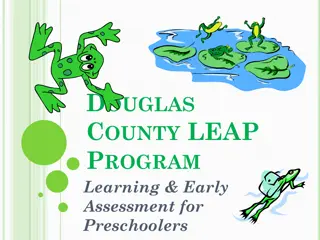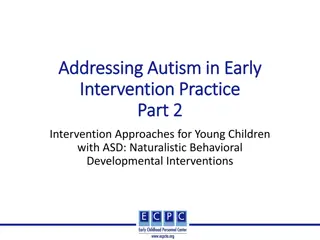Strategies for Children with SEMH Needs by Sofia Hussain
Exploring strategies for children with SEMH needs, this content discusses in-the-moment thinking and reactive strategies presented by Dr. Sofia Hussain. It delves into addressing concerning behaviors, practitioner emotions, and ways to support both practitioners and children. The approach emphasizes proactive and preventative measures alongside reactive strategies, aiming to create a supportive and trauma-informed environment for children with SEMH needs.
Download Presentation

Please find below an Image/Link to download the presentation.
The content on the website is provided AS IS for your information and personal use only. It may not be sold, licensed, or shared on other websites without obtaining consent from the author. Download presentation by click this link. If you encounter any issues during the download, it is possible that the publisher has removed the file from their server.
E N D
Presentation Transcript
'In the moment thinking Two strategies for children with SEMH Needs Sofia Hussain
Reactive Strategies for Regulation Early Years Conference Dr Sofia Hussain and, Early Years Educational Psychology Group Senior Educational Psychologist Special thanks to Mary Stephens and, Educational Psychology Team (Inclusion Support Services)
We would appreciate your views continued 1 1. What has been the most concerning or biggest red behaviour you have seen in children? How does this make you feel as a practitioner? 2.
Some of the ways you may feel. .. Do you know what your colleagues need? Do you know what YOU need? Could you complete this: If 'this' happens with 'child_X,_I may feel 1and/or 2 and I need for do this 'this' or 'that' - can 'peer Y' running away from my problems
Try Not To: What should we be avoiding? Getting 'too close' or big or crowding Ignoring completely Assuming they're still chronological age and using complex language Trying to handle this by yourself Not logging the incident and analysis Preventative: Risk assessments- environment & staffing. Plan the 'escape route' to the sensory room ahead Plan the fiddle or soothing box/distractors/transition toys ahead Have a routine for quiet transition to other spaces for all the children Log functional behaviour assessment Identify supports you need {complete the statement on slide 6. Reactive: MAINLY Careful tone/language/body...
We would appreciate your views continued 2 1. What has been the most concerning or biggest 'red' behaviour you have seen in children? 2. How does this make you feel as a practitioner? 3. What do you think will help you 'in the moment'? 4. What do you think will help the child 'in the moment'?
Philosophy: Low level arousal approach Ethos: Practical, child-centred and non- confrontational. 2 Principles: Recognise we may inadvertently trigger a stress response and responses to behaviour should be trauma informed. Components: Reducing demands, avoiding triggers and provocative non-verbal behaviours. Sounds simple but can be very challenging!
C . A .. Atmosphere: Communication: Keep speech to a minimum. Visuals will be easier to process. Keep any speech used calm, slow and simple. Use one or two words at a time. Remove the trigger (s) Remove other people Create quiet, calm and comforts Offer distraction and a way out of the situation Use a visual to offer an activity or object Don t argue. Don t talk about the person to others in the room.
L. M.. Me: Listen Keep your facial expressions relaxed and neutral Don t share Keep a relaxed posture Leave your hands open and your arms unfolded Keep a safe distance Allow time to recover and calm Don t make any demands Allow rest as the person may be exhausted Review and record what went well and what should be changed
We would appreciate your views Continued 3 1. What has been the most concerning or biggest 'red' behaviour you have seen in children? 2. How does this make you feel as a practitioner? 3. What do you think will help you 'in the moment'? 4. What do you think will help the child 'in the moment ? 5. From today, what do you think has resonated with you most? 6. What one or two things might you try moving forward? 7. How could we improve the session? 8. What should we keep from this session, if we do it again?
Thank you, links and references Please also see below for a list of preventative and practical strategies Early Years Inclusion Webcasts from the Early Years Inclusion Team and Complex Communication Needs Team: Early Years Webcasts References Broad Approaches that Support the Autistic Learner (middletownautism.com) Careknowledge (2018). The Low Arousal Approach: A Practitioner's Guide. 3-Positive-Behaviour-Support-Guidelines.pdf (lancashiresafeguarding.org.uk)


